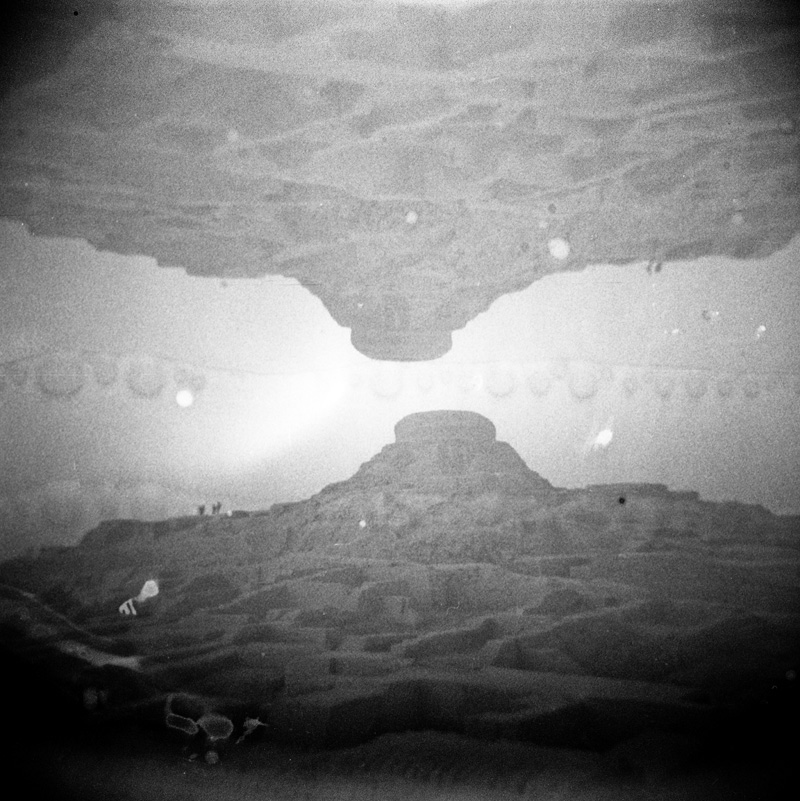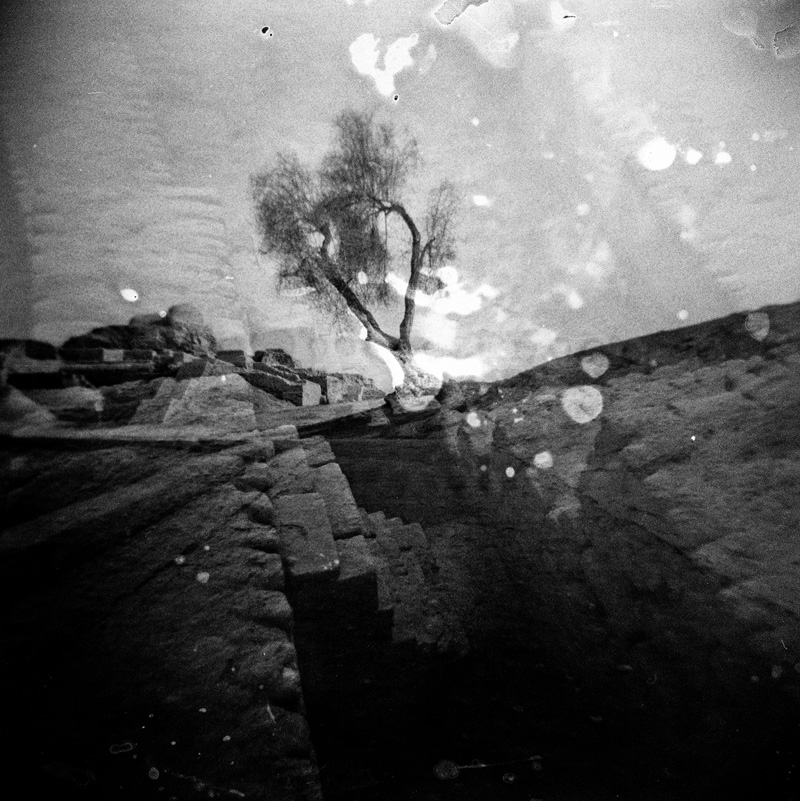Waiting for the urs in Sehwan to start I take a local bus and go maybe little more than hundred kms to the north to Moendjo Daro. These are remains of one of most ancient cities of South Asia, the oldest civilization, at least as we understand it, meaning building cities and stuff. On the banks of Indus that carries fertility and has enabled life for millenia. I am passing through towns and village entirely made out of clay bricks in the colour of surrounding dusted and landscape, and when I finally reach archeological site , the only thing that seems different is that cables and satellite dishes disappeared. I realize that bricks that make houses of this regon may have already crumbled to dust and been reshaped again many times into houses and the same is with people. I am talking here about almost 5000 years of difference in time and yet the life seems here more than anywhere else deny line and go in circles of river flooding and rain rather than arrow of progress. I am looking here inside my own past, at my ancestors in a way. On my arm I wear a tattoo of a horned god seated in yoga posture, very similar to the one that has been named Shiva Pashupati, Lord of Wild Animals, found right here, on an ancient seal. The thing is , my tattoo is copied from silver cauldron found in Denmark, and it is Cernunnos, Lord of Animals of the Celts, and both look almost the same…The artificial frontiers of time and space melt before my eyes and I love that feeling. I will soon come back to Sehwan, when Shiva continues his cosmic dance in yet another disguise and white clad villagers pay their respect, generation after generation.
***
Czekając aż rozkręci się święto w Sehwan jadę lokalnym, przepełnionym autobusikiem jakieś sto czy dwieście kilometrów na północ do Moendjo Daro. To ruiny jednego z najstarszych miast, nie tylko południowej Azji ale świata. Najstarsza cywilizacja tego rejonu, przynajmniej tak jak to rozumiemy, czyli budowanie miast i całego tego badziewia, na brzegach Indusu, który przez tysiąclecia użyźnia pola i daje życie kolejnym pokoleniom. Po drodze mijam miasteczka i wioski w całości zrobione z glinianych cegieł, koloru otaczającego je zakurzonego krajobrazu, i kiedy w końcu docieram na teren wykopalisk, jedyna większa różnica jaką zauważam to brak kabli i anten satelitarnych. Dochodzi do mnie, że cegły tego regionu być może już wiele razy kruszyły się w piach i formowane były ponownie, tak samo jak ludzie. Mowa tu o odległości 5000 km w czasie, a jednak życie nawet bardziej niż gdzieś indziej zaprzecza liniowości i płynie raczej po spirali niekończących się wylewów rzeki i odchodzących deszczów. Spoglądam w swoją własną przeszłość, patrzę w twarz także moim przodkom. Na ramieniu noszę tatuaż rogatego boga w pozycji jogi, bardzo podobnego do tego którego znaleziono tutaj, w Moendjo Daro, na starożytnej pieczęci, i nazwano Shiva Pashupati, Władca Dzikich Zwierząt. Ale mój tatuaż skopiowany jest ze srebrnego kotła znalezionego w bagnie w Danii, i jest to Cernunnos, Pan Zwierząt wielbiony przez Celtów, mimo to oba wcielenia niewiele się różnią. Sztuczne granice czasu i przestrzeni rozpływają się przed moimi oczami i kocham to uczucie. Wkrótce będę z powrotem w Sehwan, gdzie Sziwa kontynuuje swój kosmiczny taniec, w kolejnym z nieskończonych przebrań, a ubrani na biało wieśniacy dalej składają hołd, pokolenie za pokoleniem.
[ Pakistan, July 2012 / Pakistan, lipiec 2012 ]




